Bamburgh Castle is undoubtedly one of the most impressive castles in Great Britain. And it is definitely one of the best-preserved castles on the island. Fact? My opinion! And perhaps also fact…
Page Contents (click line to jump the text)
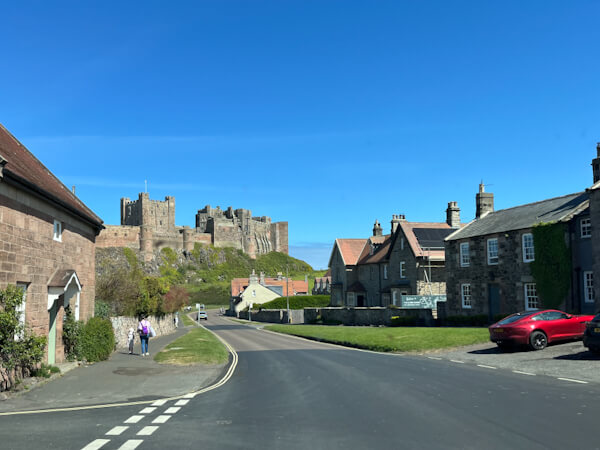
Intro and travel report
We slowly drift south past Edinburgh. In this case, in a motorhome. Past wonderful coastlines with strange offshore rocks and islets, coloured grey-white either by the limestone of the rock or by thousands of breeding seabirds.
We also pass numerous golf courses, which are strung like pearls along the coastal road, and small and medium-sized towns pulsating with colourful life. No wonder, given the weather: bright sunshine and a bright blue sky!
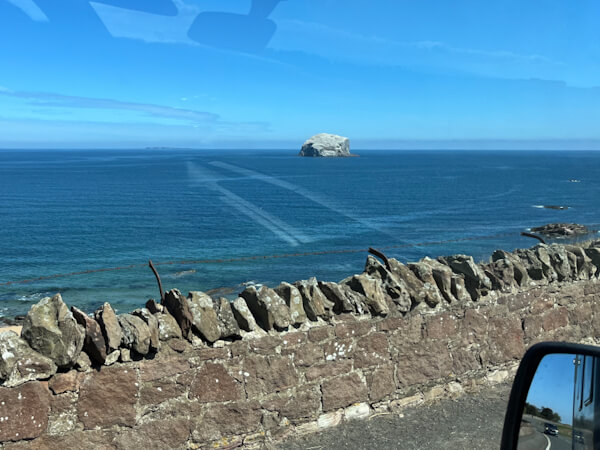
Yes, we are still in Scotland, and yes, we had beautiful weather quite often on this tour!
In Dunbar, we try to park our rather large motorhome and explore the harbour and the old town. But it remains just an attempt, because in this weather, there is absolutely no parking space near the harbour that would be large enough.
As we drive by, we take in the town: beautiful old houses, a super-cute old town and a dream of a small harbour with distinctive quay walls would have tempted us…
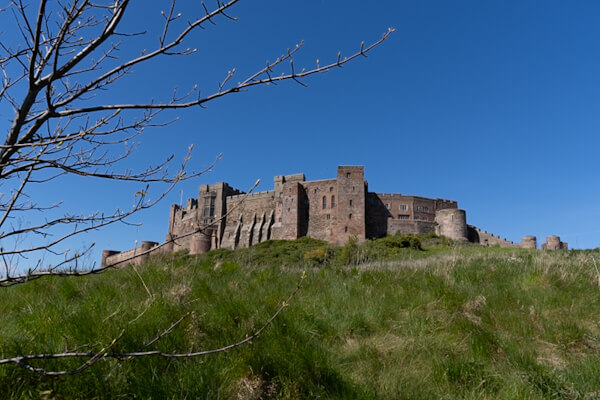
We continue rolling south along the coast. This is the south-east coast of Scotland, and the sea is the North Sea, which is part of the Atlantic Ocean. If you swim long enough, you’re bound to end up in Sylt at some point…
At Berwick upon Tweed, we suddenly find ourselves in the north-east of England. A few kilometres further on, we see a long stretch of sand jutting out into the sea. A small causeway, a narrow path, leads to the small island of Holy Island.
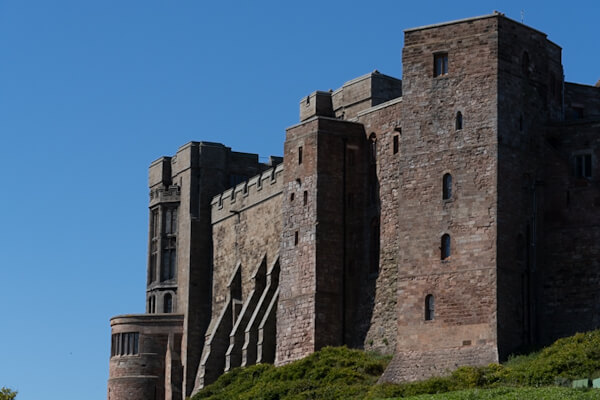
Today, Holy Island is home to a few houses, Lindisfarne Castle and a sandy beach. There is also the Lindisfarne Heritage Centre and the ruins of Lindisfarne Priory.
The monastery has a long and eventful history. In the 7th century, the Irish monk St. Aidan founded the first monastery here, which grew and flourished from then on. Until 8 June 793, when Vikings raided the monastery, robbed and destroyed the church, and killed the inhabitants.
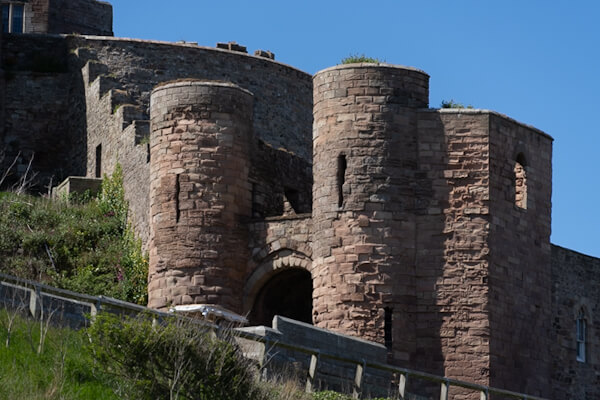
This event went down in Anglo-Saxon history as the first documented Viking raid on the British Isles. Many more Viking raids were to follow in the coming years, in England, Scotland and Ireland.
Incidentally, Lindisfarne Castle, which today sits enthroned on a rock, was unable to protect the monastery at that time, as it was not built until several centuries later.
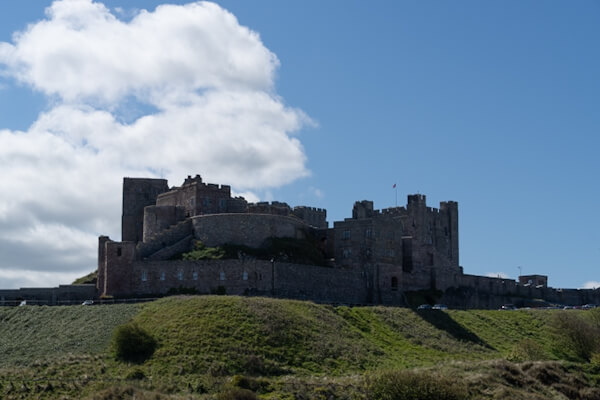
Bamburgh Castle, just a few minutes’ drive from Lindisfarne, is much older. It was founded in the 5th century. At that time, it was a rather modest wooden fort. The massive stone castle we see today dates from later times, but more about that later.
The car park is very spacious and there are even parking spaces for motorhomes. Some of them can even be booked online for an overnight stay. Unfortunately, all the spaces are already booked for the night, but we find a space for our short stay.
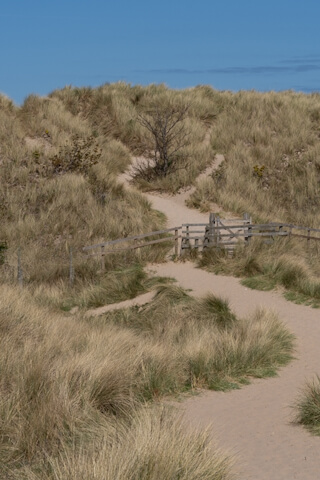
With the sun shining so brightly, we don’t feel like visiting the castle inside, even though I’m a fan of castles and this one looks incredibly impressive!
So we walk up the hill, around the outside of the castle, and I take a few photos. My goodness, what a massive castle! At the back of the castle, we walk down the dunes on small sandy paths and reach the sandy beach after a few minutes.
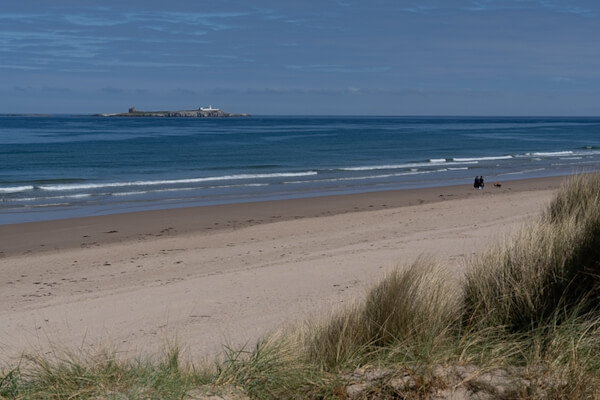
A very long, very wide and very sandy beach reveals itself to us. Behind us lies the castle above the dunes and in front of us lie the Farne Islands in the sea. Wonderful!
Our dog Finn also thinks the beach is wonderful, because finally!!! he can run, romp and play ball again!
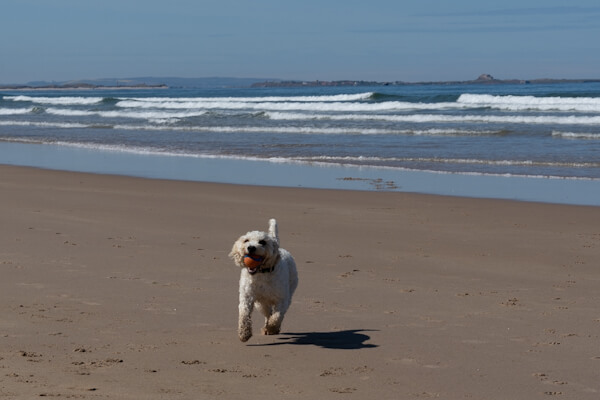
After a while, we waddle through the deep sand up the dunes, reach the castle again and, a short time later, our motorhome.
I am a little sorry that I did not visit the castle from the inside, but it was still a great stopover on our trip. And who says we won’t come back again someday?
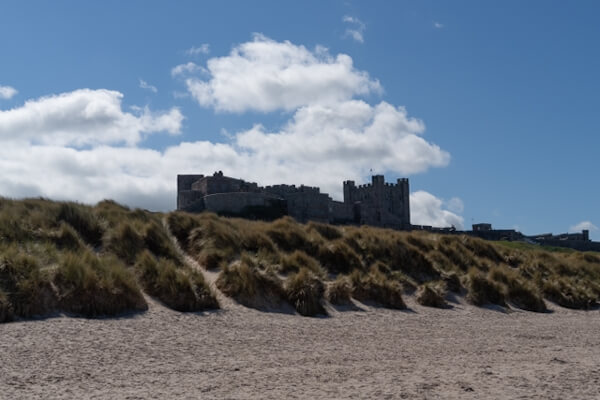
Brief history of Bamburgh Castle
Bamburgh Castle was the seat of the King of Northumberland, the kingdom on the north-eastern border of what was then Britain. At that time, England still consisted of individual kingdoms, as did Wales and Scotland. The United Kingdom was not formed until much later.
In the 5th and 6th centuries, the castle changed hands several times, with the Anglo-Saxons disputing the lands with the Roman-Celtic Britons. During these quarrels, the castle was called Bebbanburgh for a time.

Does the name sound familiar? If you’ve seen the series ‘The Last Kingdom,’ then you’ll recognise the castle as Bebbanburgh, which was ruled by Uther of Bebbanburgh for some time.
In 993, the original wooden castle was destroyed by Vikings. The Anglo-Normans, who were now ruling Britain, rebuilt it, and like so many castles they built in Britain, Wales and later Ireland, Bamburgh was expanded into a very massive stone castle.

Over the following centuries, the castle underwent several structural extensions, which made it larger and more comfortable. Today, it is privately owned and open to the public. See: https://www.bamburghcastle.com.
For a long time, the British repeatedly attempted to annex the Kingdom of Scotland, and there was constant unrest and armed conflict in the border region between Scotland and Northumbria.
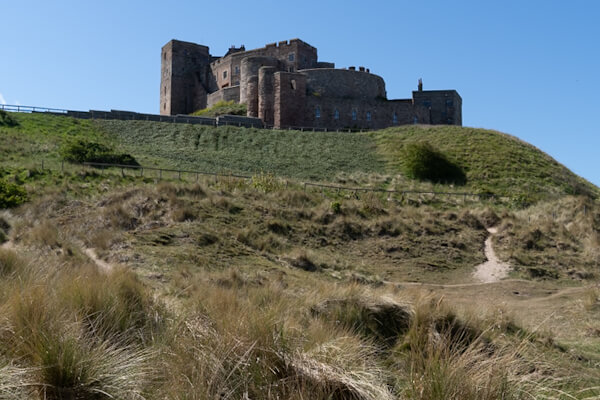
Bamburgh Castle was already of strategic importance to the British in the early Middle Ages for protecting the border with Scotland. Later, protection against the Vikings was added to this.
Today, Bamburgh Castle is one of the most impressive castles in Great Britain, mainly because it is in such excellent condition. But its location directly above the dunes of a beach and its sheer size also make it an absolute highlight.
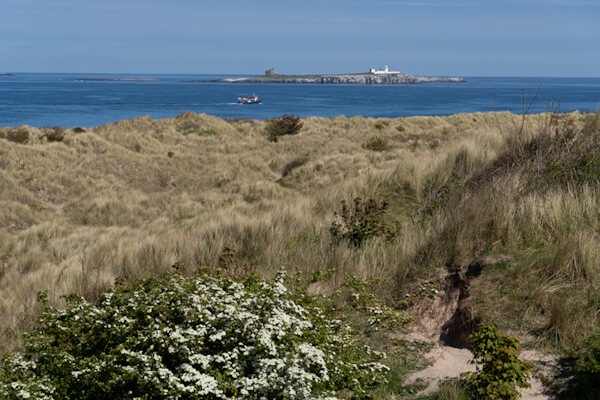
Conclusion
Bamburgh Castle is an absolute highlight in the north-east of England! The castle is incredibly impressive, and its location on the beach is simply beautiful.
You can also stay overnight in the area and visit a few beautiful sights in the surrounding area:
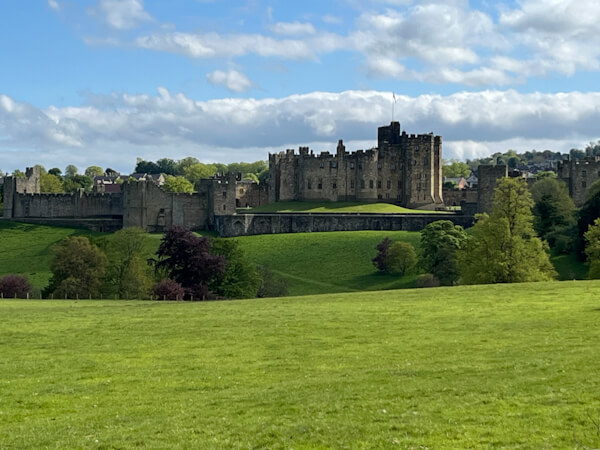
For example, Lindisfarne (see: http://www.lindisfarnecentre.org and https://www.nationaltrust.org.uk/visit/north-east/lindisfarne-castle),
or the pretty town of Alnwick with its beautiful Alnwick Castle (see: https://www.alnwickcastle.com).
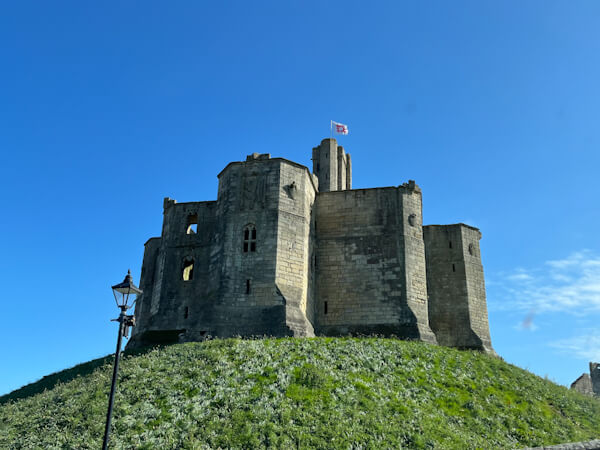
Or the small Warkworth Castle in Warkworth (see: https://www.english-heritage.org.uk/visit/places/warkworth-castle-and-hermitage).
Overall, we really enjoyed the north-east of England and Bamburgh Castle is definitely worth a visit!
More interesting articles for you
ROMANS IN BRITAIN: AT HADRIAN’S WALL
A TRIP THROUGH THE NORTH AND WEST OF WALES
LLANDUDNO: MARVELOUS SEASIDE RESORT IN THE NORTH OF WALES
Image credit cover photo: Bamburgh Castle (photo: Ulrich Knüppel-Gertberg)